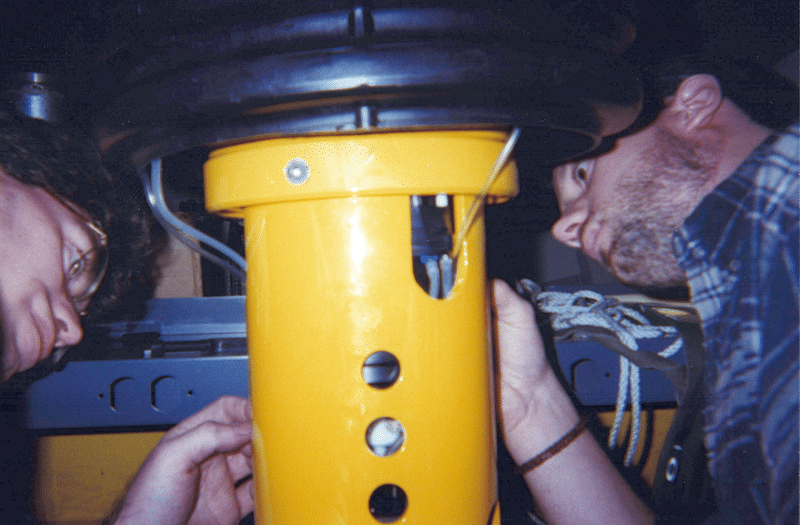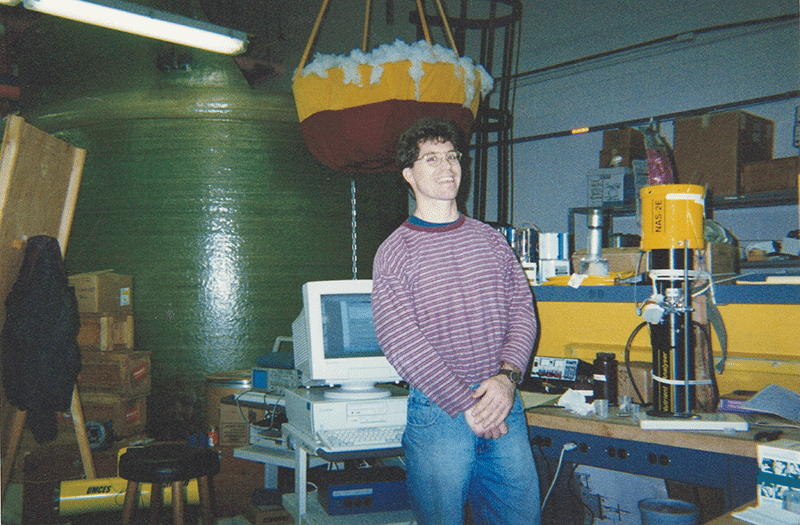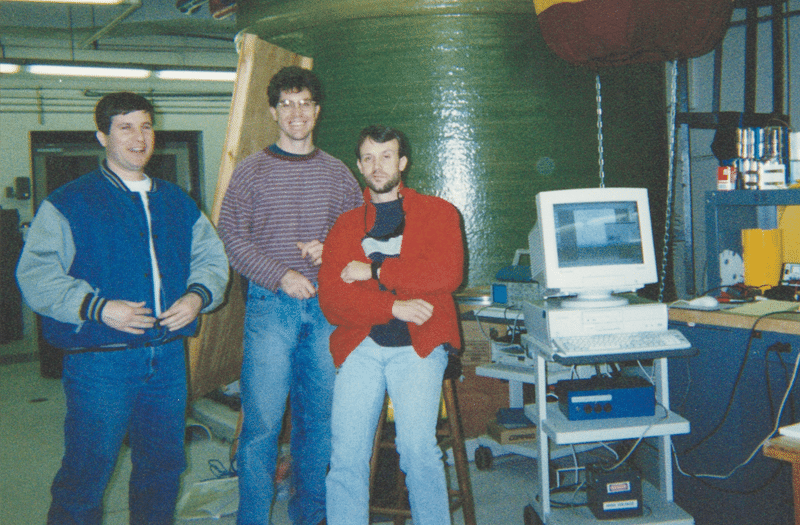1oo Stories

People
Born from the Bay: Green Eyes Takes UMCES Innovation to Global Waters



It started with a lab notebook and a $25,000 mistake.
In the late 1990s, Vince Kelly was a graduate student at Old Dominion University working under renowned oceanographer Dr. Lou Codispoti. Together, they were testing nutrient autonomous sensors using a colorimetric method—similar to how swimming pool chlorine is measured—but under water for weeks at a time, with the goal of understanding rapid changes in nutrient concentrations in aquatic ecosystems. When Codispoti moved to the University of Maryland Center for Environmental Science (UMCES) in 1999, Vince followed.
Soon after arriving at UMCES, Vince found himself on the Choptank River deploying a high-tech nutrient monitoring instrument for his first real-world experiment. He was assisted by Bill Boicourt, who led the Chesapeake Bay Observing System—a pioneering network of instrumented buoys and monitoring stations in the Bay—and even served as a diver during the installation of the sensor on the buoy. When Vince later returned to retrieve the device, he discovered that part of the instrument had disappeared—the steel cable and $25,000 sensor had fallen into a 30-meter-deep hole off Castle Haven Point in the Choptank River.
Instead of scolding, Codispoti reassured him: “All you lost was the instrument. You still have your lab notebook.” And against the odds, two brave divers retrieved the device in the deep icy waters of March. Remarkably, it was still running.
That early field trial led to published data and more funding for additional deployments in the Pocomoke, Choptank, and Corsica Rivers. Vince’s work with integrating nutrient sensors and transmitting real-time data was a game-changer. The research advanced the ability to measure nitrogen, phosphorus, and ammonia levels in aquatic environments—information crucial for tackling issues like harmful algal blooms and nutrient pollution.
When Codispoti began to plan his retirement, he wanted to ensure this important work continued. He encouraged Vince to take the science further. In 2005, Vince founded Green Eyes LLC, a company devoted to developing real-time water monitoring systems.
“Lou believed in what we were doing,” Vince said. “He wanted to see it live on in the field—not just in the lab.”
Over the past 20 years, Green Eyes has done just that. The company developed and refined its flagship product, NuLAB, capable of providing high-frequency nutrient data in rivers and estuaries. Green Eyes received support from NOAA, TEDCO, and the Maryland Industrial Partnerships program, continuing to collaborate with UMCES scientists while expanding their product line to include tools for water sampling, sediment erosion studies, and biofouling control.
Despite the challenges of slow, incremental growth, Green Eyes stayed focused on the long game: building reliable tools to help scientists and agencies understand the root causes of surface water degradation and the effects of nutrient runoff.
In April 2025, Green Eyes entered a new chapter when it was acquired by SePRO Corporation, a national leader in water quality solutions. Vince, now Technical Development Manager at SePRO, continues to guide the company’s innovation pipeline. The acquisition allows Green Eyes’ tools to scale globally, expanding their reach and accelerating the development of new technologies.
“To reverse the worldwide degradation of surface water quality, natural resource managers need accurate, high-frequency nutrient data,” Vince said. “This partnership will make real-time monitoring more accessible and more powerful than ever before.”
What began as a student project at UMCES has grown into a company shaping the future of environmental monitoring. Today, thanks to a foundation built at UMCES and a lab notebook that never got lost, Green Eyes is helping the world see water quality more clearly.






